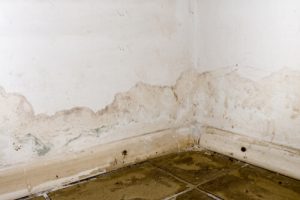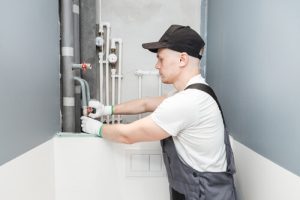 Floods can cause a lot of damage to nearly all areas of your house, including your drywall. In that case, you’ll most likely need to hire reliable water damage restoration experts in Carmel Mountain to return your drywall to its former condition. But how badly does drywall generally get damaged during a flood? Moreover, do you need to replace your drywall if it gets wet?
Floods can cause a lot of damage to nearly all areas of your house, including your drywall. In that case, you’ll most likely need to hire reliable water damage restoration experts in Carmel Mountain to return your drywall to its former condition. But how badly does drywall generally get damaged during a flood? Moreover, do you need to replace your drywall if it gets wet?
We’ll tell you all of that and then some! Whether you need more information on water damage on your ceiling or how to go about protecting your basement from flooding, you’ve come to the right place. Read on to learn more about treating wet drywall.
Is drywall ruined if it gets wet?
Determining whether your drywall is ruined by flooding depends on the amount of dampening it’s been exposed to. Here are two possible scenarios:
Light dampening
Smaller leaks shouldn’t damage your drywall beyond repair. But in order to avoid a lot of harm, you’ll need to react quickly in order to handle a flooded room properly.
To do so, immediately stop the water supply to the affected room, turn off the power supply, and start drying your drywall with towels. The drywall might experience some discoloration in the process, but you should be able to remedy this using white paint.
Heavy dampening
If your drywall is exposed to large amounts of water over longer time periods, the damage can be much more severe. This usually happens when they are exposed to a steady leak that goes unnoticed. In this case, you’re bound to see discoloration and warping, and the drywall can even get disintegrated into chalky powder if you apply pressure.
Do I need to replace drywall that got wet?
The degree to which your drywall has been exposed to water will dictate whether or not you should replace it. Here are some scenarios that warrant drywall replacement:
- Sagging and warping – If you notice that your drywall has started sagging and warping even after drying it, you should cut off the affected area and install a new sheet.
- Crumbling – As previously mentioned, prolonged water exposure can weaken your drywall and make it crumble under pressure. If so, replace it immediately.
- Mold growth – Moisture is the main trigger of mold growth on your drywall. In worst-case scenarios, it can penetrate into the gypsum, making drywall replacement highly recommended.
How long does it take for drywall to dry out?
The time it takes for drywall to dry out depends on the type of equipment you use in the process. Your best bet is to rent some large dehumidifiers and high-volume fans. In particular, make sure that they generate temperatures of about 115 degrees Fahrenheit but create a relative humidity of no more than 14 percent.
After you’ve cleaned the affected area, and installed the drying equipment, let the drywall dry out for three days. Afterward, check your drywall using a moisture meter.
Hire the top Water damage restoration in Carmel Mountain
 Following a flooding situation, it’s quite likely that you don’t feel like doing anything, let alone paying a visit to Birch Aquarium. The only thing on your mind is salvaging as many areas of your home as possible and restoring them to their previous condition.
Following a flooding situation, it’s quite likely that you don’t feel like doing anything, let alone paying a visit to Birch Aquarium. The only thing on your mind is salvaging as many areas of your home as possible and restoring them to their previous condition.
Thankfully, KIC Restoration is here to provide just that. Don’t try to remediate your flood damage on your own and risk endangering your health in the process. Instead, reach out to KIC Restoration, and our technicians with a proven track record won’t leave until your home is safe once more. Book our services today!
